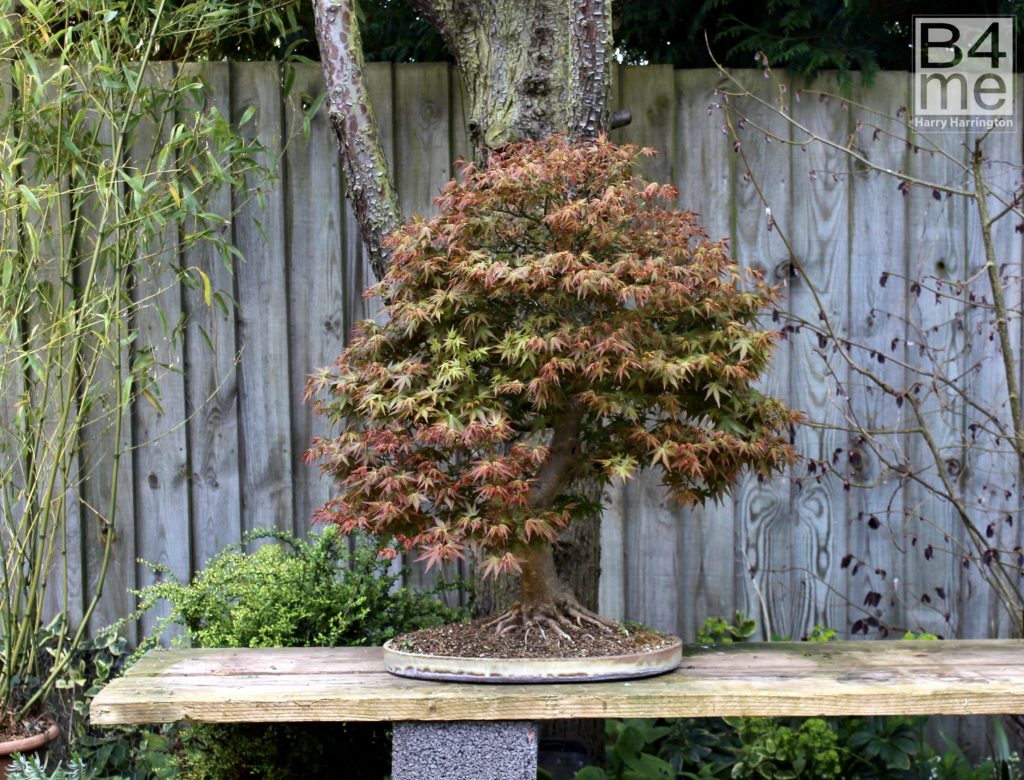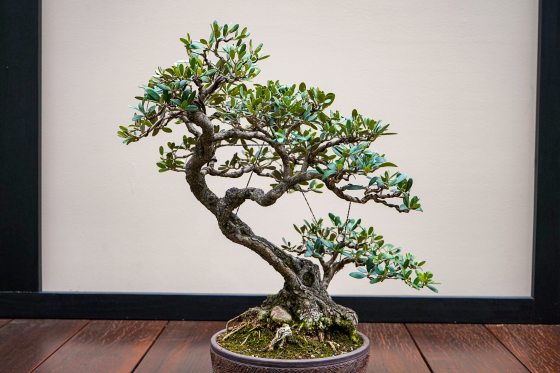Bonsai Forms simplify managing client information and project details. They streamline administrative tasks for freelancers and small businesses.
Bonsai Forms offer an efficient way to handle essential business documents and client interactions. Freelancers and small business owners can save time by using these customizable templates. With Bonsai Forms, you can create contracts, invoices, and proposals effortlessly. These forms help ensure that all necessary details are captured accurately.
This reduces the risk of misunderstandings and enhances professionalism. The user-friendly interface makes it easy to generate and manage documents. Bonsai Forms also integrate seamlessly with other tools, enhancing workflow efficiency. By adopting Bonsai Forms, you can focus more on your core business activities and less on administrative tasks.
Introduction To Bonsai
Bonsai is the art of growing miniature trees in containers. It is a practice that combines horticulture and art, producing small yet fully grown trees. This tradition has fascinated people for centuries due to its beauty and complexity.
History And Origins
The roots of Bonsai trace back over a thousand years. It began in China during the Han Dynasty. The Chinese practiced penjing, the art of creating miniature landscapes. These landscapes included trees, rocks, and water features.
By the 6th century, Japanese monks brought penjing to Japan. The Japanese refined this art into what we now call Bonsai. The term “bonsai” means “tree in a tray” in Japanese.
Bonsai became popular among the Japanese elite. It symbolized prestige and artistic talent. Over the centuries, it spread to the general population and eventually to the rest of the world.
Cultural Significance
Bonsai holds a special place in Japanese culture. It represents harmony, patience, and nature. Each tree is a living work of art, reflecting the care and dedication of its grower.
- Symbol of Harmony: Bonsai trees are believed to bring balance to any space.
- Patience: Growing a Bonsai tree can take years, teaching patience and care.
- Nature Connection: Bonsai allows people to connect with nature, even in urban areas.
In modern times, Bonsai has gained international acclaim. Many people see it as a way to relax and meditate. It serves as a reminder of the beauty and simplicity of nature.
Basic Bonsai Styles
Bonsai trees are a beautiful art form. They come in various styles. Each style has its own charm and rules. Understanding these styles helps you grow better bonsai trees.
Formal Upright
The Formal Upright style is a classic bonsai form. The tree grows straight up. Its trunk is perfectly vertical. This style symbolizes strength and resilience. The branches are evenly spaced. They create a balanced look.
| Characteristic | Description |
|---|---|
| Trunk | Perfectly straight and upright |
| Branches | Evenly spaced and balanced |
| Symbolism | Strength and resilience |
Informal Upright
The Informal Upright style is more relaxed. The trunk is not straight. It has gentle curves. This style represents flexibility. The branches spread out naturally. They follow the trunk’s curves.
- Trunk with gentle curves
- Natural and flowing branches
- Represents flexibility and adaptability
Advanced Bonsai Forms
Bonsai trees are miniature trees grown in pots. They represent harmony and beauty. Advanced bonsai forms are captivating. They require skill and patience. Let’s explore some fascinating styles below.
Slanting Style
The Slanting Style is unique. The trunk grows at an angle. This mimics trees buffeted by strong winds. The angle can be dramatic or gentle. Roots are crucial in this style. They anchor the tree firmly.
Key Features:
- Trunk angles between 60-80 degrees
- Strong, visible roots
- Branches grow horizontally or slightly upward
Best species for Slanting Style:
| Species | Characteristics |
|---|---|
| Juniper | Hardy and resilient |
| Maple | Beautiful fall colors |
Cascade Style
The Cascade Style is dramatic. It replicates trees growing on cliffs. The trunk cascades downward. The pot is often tall. This allows the trunk to hang freely.
Key Features:
- Trunk extends below the pot’s base
- Branches grow downward and outward
- Top of the tree is sparse
Best species for Cascade Style:
| Species | Characteristics |
|---|---|
| Pine | Flexible and strong |
| Wisteria | Beautiful cascading flowers |

Credit: bonsai4me.com
Tools And Materials
Creating stunning bonsai forms requires specific tools and materials. The right tools make the process easier. Proper materials help the bonsai thrive. Let’s explore the essentials.
Essential Tools
Using the right tools is crucial for bonsai care. Here are the essential tools:
- Bonsai Shears: These are used for precise trimming.
- Concave Cutters: Ideal for removing branches cleanly.
- Wire Cutters: Necessary for cutting training wire.
- Root Rake: Helps in untangling roots gently.
- Training Wire: Used to shape and train the bonsai.
Choosing The Right Soil
The soil mix is vital for bonsai health. It should provide good drainage and aeration. Here are the key soil components:
| Component | Benefits |
|---|---|
| Akadama | Retains water and nutrients well. |
| Pumice | Provides good drainage and aeration. |
| Lava Rock | Helps with aeration and root growth. |
| Organic Compost | Offers essential nutrients for the bonsai. |
Mix these components in equal parts for a balanced soil mix.
Techniques For Shaping
Shaping a bonsai tree requires skill and patience. Various techniques help achieve the desired look. Two of the most important techniques are pruning and wiring. These methods ensure your bonsai maintains its form and beauty.
Pruning Methods
Pruning is crucial for bonsai shaping. It involves cutting specific parts of the tree. This encourages growth in the desired direction.
- Maintenance Pruning: This method keeps the tree’s shape. Trim back new growth regularly.
- Structural Pruning: This method shapes the tree initially. Remove larger branches to define the form.
Use sharp, clean tools for pruning. This ensures clean cuts and prevents disease. Prune during the tree’s dormant season for best results.
Wiring Techniques
Wiring helps bend and shape branches. It gives you control over the tree’s form.
- Single-Wire Technique: Use one wire to bend a branch. Wrap the wire around the branch tightly but not too tight.
- Double-Wire Technique: Use two wires for better control. This method is for thicker branches.
| Wire Type | Best For |
|---|---|
| Aluminum Wire | Young or thin branches |
| Copper Wire | Thicker or older branches |
Always monitor wired branches. Remove the wire before it cuts into the bark. Check every few weeks to ensure the tree’s health.
Care And Maintenance
Proper care and maintenance are crucial for keeping your bonsai forms healthy. These small trees require special attention to thrive indoors or outdoors. Follow these tips to ensure your bonsai stays beautiful and strong.
Watering Tips
Watering is the most critical aspect of bonsai care. The soil should never dry out completely. Overwatering can lead to root rot, so balance is key.
- Check the soil moisture daily.
- Use a watering can with a fine nozzle.
- Water until water drains from the bottom.
- In summer, water more frequently.
- Reduce watering in winter.
Fertilization Guide
Fertilization provides essential nutrients for your bonsai. A well-balanced fertilizer ensures healthy growth. Follow these guidelines for optimal results:
| Season | Fertilizer Type | Frequency |
|---|---|---|
| Spring | High Nitrogen | Every 2 weeks |
| Summer | Balanced | Monthly |
| Fall | Low Nitrogen | Every 2 weeks |
| Winter | No Fertilizer | Not Needed |
Always follow the fertilizer package instructions. Over-fertilizing can harm your bonsai.
Common Bonsai Species
Bonsai trees are miniature trees grown in containers. Each species has unique needs and beauty. Understanding the types helps in their care. Here are some common bonsai species.
Popular Tree Types
Different trees are popular for bonsai. Each tree has unique features.
- Juniper: Hardy and easy to shape.
- Ficus: Tolerates low light and indoor conditions.
- Maple: Known for stunning fall colors.
- Pine: Represents strength and longevity.
- Cherry Blossom: Beautiful flowers in spring.
Species-specific Care
Each bonsai species needs special care. Here are some tips for popular species.
| Species | Watering | Sunlight | Pruning |
|---|---|---|---|
| Juniper | Moderate, let soil dry | Full sun | Regularly to maintain shape |
| Ficus | Keep soil moist | Indirect light | Trim as needed |
| Maple | Frequent, avoid dry soil | Partial shade | Prune in spring |
| Pine | Let soil dry between | Full sun | Pinch new growth |
| Cherry Blossom | Keep soil moist | Full sun | Prune after flowering |

Credit: longwoodgardens.org
Bonsai Display And Aesthetics
The display of a bonsai tree is as important as its care. Proper display enhances the beauty of your bonsai. It also reflects the artistry involved in bonsai cultivation. This section explores how to choose a pot and arrange your bonsai for display.
Choosing A Pot
Choosing the right pot is crucial for your bonsai. The pot should complement the tree’s size and style.
- Material: Ceramic and clay pots are most popular.
- Size: The pot should be neither too large nor too small.
- Color: Neutral colors work best for most bonsai trees.
Here is a quick reference table to help you choose:
| Tree Type | Recommended Pot Material | Recommended Pot Color |
|---|---|---|
| Conifer | Ceramic | Brown |
| Deciduous | Clay | Grey |
| Flowering | Ceramic | Glazed |
Arranging For Display
Arranging your bonsai for display requires careful thought.
- Choose a prominent spot in your home.
- Ensure the area has good lighting.
- Consider the background; it should not distract from the bonsai.
Use a simple stand to elevate your bonsai. This helps showcase its beauty. Here are some tips:
- Height: Display the bonsai at eye level.
- Stand Material: Wood stands are traditional and elegant.
- Arrangement: Keep the display area clutter-free.
Following these tips will enhance your bonsai’s aesthetic appeal. Your bonsai will become a beautiful focal point in any room.
Conclusion And Inspiration
Embracing the art of Bonsai brings peace and joy. Each Bonsai tree represents nature’s beauty in a miniature form. Creating and caring for Bonsai can be a meditative practice. This journey connects you with nature and nurtures patience.
Famous Bonsai Examples
Some Bonsai trees are famous for their beauty and history. They inspire both beginners and experts.
- Ficus Retusa Linn: This tree is over 1,000 years old. It resides in the Crespi Bonsai Museum in Italy.
- Yamaki Pine: This tree survived the Hiroshima bombing in 1945. It now lives in the National Bonsai & Penjing Museum in Washington D.C.
- Shunka-en: Owned by Master Kunio Kobayashi, it is one of the most beautiful Bonsai trees worldwide.
Starting Your Own Journey
Starting with Bonsai is simple and rewarding. Here are some steps to help you begin:
- Select a Tree Species: Choose a species that suits your environment and care level.
- Get the Right Tools: Basic Bonsai tools include scissors, wire cutters, and pruning shears.
- Learn Basic Techniques: Pruning, wiring, and repotting are essential skills to master.
- Regular Care: Water and fertilize your Bonsai regularly. Ensure it gets enough sunlight.
Starting your Bonsai journey can be fulfilling. Each step brings you closer to mastering this ancient art. Enjoy the process and watch your miniature tree thrive.

Credit: www.pinterest.com
Conclusion
Exploring bonsai forms can be a rewarding journey. Each style offers unique beauty and challenges. Embrace the art of bonsai and cultivate your creativity. Start with a simple form and gradually experiment. Your bonsai journey will bring joy and tranquility to your life.
Happy growing!

